
A history of epidemics: In past, Navajos survived many epidemics. Spanish flu, virus pose danger
Part 1
WINDOW ROCK
Hataałii adéíst’į́į́’ ííł’ínígíí said a deadly and unseen sickness known as ch’osh doo yit’iinii, or ha’t’ííshíí na’ałniihi, was born from the ashes of the mammals and reptiles that burned in the Australian fires in 2019.
The hataałii, who asked to remain anonymous, said the ashes of the animals rose into the air and it weakened the ozone enough for cosmic rays to shoot an entity into the ocean that caused the earth to open up and release an energy that impacted fish and other marine life before reaching the surface.
Humans caught marine life and they ate them. Other mammals ate the fish, and in turn, other animals ate those animals. Soon the entity formed into a virus that first affected the mammal and reptile kingdoms before transforming to infect the human species, the hataałi said.
The first person to be infected by the virus became sick and soon died. The virus then took on a new form. It became a ghost, Navajo practitioners said.
The ghost-virus then began its journey infecting the world, hiding in the darkness, and making it very difficult for people to see.
The Centers for Disease Control gave the ghost-virus a name: SARS-CoV2, better known as COVID-19. Navajo Nation leaders named it Dikos Nitsaaígíí Náhást’éíts’áadah.
Influenza pandemics have affected the human race with fatal consequences for many centuries. The CDC added the influenza virus adapted, capable of switching between humans and animals like birds, pigs, horses, and bats, and killed untold populations of people.
As a public service, the Navajo Times is making all coverage of the coronavirus pandemic fully available on its website. Please support the Times by subscribing.
How to protect yourself and others.
Why masks work. Which masks are best.
Resources for coronavirus assistance
Greek philosopher Hippocrates called it febris catarrhalis epidemia, which roughly translates to “a great fever that to flows out of the nose.”
The CDC said scientists only began understanding the influenza virus in the late 1800s. It was not until after the 1918 “Spanish” flu that killed more than 3,000 Navajos, or 24% of the population, and an estimated 50 million people worldwide, that scientists began to study the deadly and unknown killer.
Sicknesses are not new to the Navajo people. Some are well documented, specifically between 1864 and 1868. Mostly, traders, agents and school superintendents have anecdotally documented the illnesses of the past from a first-person perspective.
Overall, traditional Navajo people have chosen not to speak of the sicknesses because to mention them would invite them back.
Before Hwééldi, the Navajo people focused on their inner energy and avoided thoughts that provoked negativity. To them, negativity eventually turned into evil, which then turned into an ailment or a consequence that harmed family members.
To avoid evil, the Navajos channeled their thoughts into positive action, the hataałii said.
They said prayers every day and then turned to their daily chores. For boys, it was herding the family’s flock of churros. For the girls, it was weaving a rug with their mothers. The men went on hunting trips or gathered herbs for ceremonies.
In the evening, grandfathers would share their knowledge, passed down from their grandfathers. Morality, thankfulness, humility and wisdom were some of the teachings they gave to the young children, as well as the importance of ceremonies, the hataałi said.
Even with the 1830-33 influenza outbreak, the CDC stated, that swept across Europe and North America, Navajos honed their energies to keep them healthy in mind and body. Though there is no evidence to suggest the pandemic ever reached the Navajos, people who caught the influenza and survived it built an immunity against it.
Despite occasional raids from the Noodá’í, Dziłghą́’í, and the Naakai Dine’é, as well as bouts of drought that often lasted for years, those energies were quickly dealt with, the hataałii continued, through various ceremonies that usually brought balance back into the people.
Children were taught not to question nature even as drought occasionally devastated their way of life, the hataałii added, because the Diyin Diné’é made it. So, they lived accordingly.
In 1844, a comet, along with a meteor shower, was seen in the sky across Navajo country. Both celestial events were seen as omens that told the Navajos that bad things were in the future.
In 1847, the CDC stated, another influenza outbreak swept through Europe that killed thousands. Again, the sickness did not reach the Navajo people.
Four years later, the Treaty of Guadalupe Hildalgo of 1848, between the U.S. and Mexico, was signed. The treaty was about to alter Navajo lives forever. No longer would it be easy for a Navajo hataałii to correct negative energy in their patients.
In August of 1849, Narbona was killed after negotiating a treaty with Col. John M. Washington on the east side of the Chuska Mountains. His death reinforced what the omens foretold five years earlier.
Eight years later, in 1857, the CDC stated, the fifth influenza pandemic of the century did not reach the Navajo people, but by this time, they were in the midst of another war, this time with the U.S.
Fifteen years after Narbona’s murder, in 1864, the Navajo people were forced to move to Fort Sumner.
“That was when we gave up our weapons, like bows and arrows,” Friday Kinlicheenie told David Brugge in 1972, while talking about Hwéeldi. “It was taken from us and we committed never to fight again.”
There, the kind of diseases they’d encounter put their skills as herbalists, and mastery of sacred songs and prayers for health and prosperity, to the test. Traditional practitioners had not yet diagnosed and performed ceremonies to remedy those deadly contagions.
In addition, the Navajo people with the evil spirit of war in their hearts complicated their relationship with those who did not. According to handwritten documents stored at the Fort Sumner Historic Site/Bosque Redondo Memorial, the military doctors stationed at Fort Sumner said the Navajos had a much difficult time living while at Hwéeldi during their captivity.
According to the medical statements, the Navajos suffered diseases that ranged from the mumps, parotitis, rheumatic fever, pneumonia, measles, bronchitis, typho-malarial fever, chronic diarrhea, and constipation.
The most common disease they were diagnosed with, however, was syphilis. Having no cure to battle these new diseases impacted their inner energy.
They were also not allowed to properly mourn, nor properly send their loved ones off to the spirit world, which compounded the hardships of their imprisonment.
The Navajos believed the 1844 omens were punishments they were given because they were no longer living according to what Asdzą́ą́ Nádleehí instructed them to live by. As punishment, they were led away from their sacred mountains to suffer.
For many, the evil energy the war leaders harbored within their hearts was why the Diyin Diné’é were punishing them.

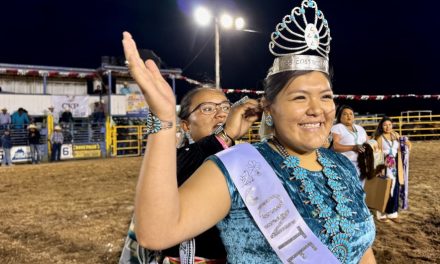
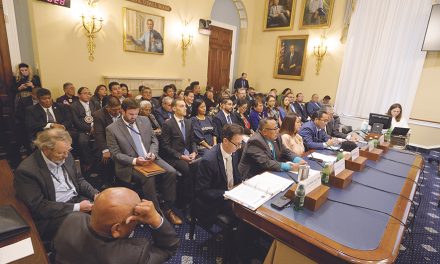
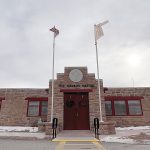
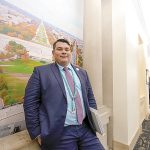

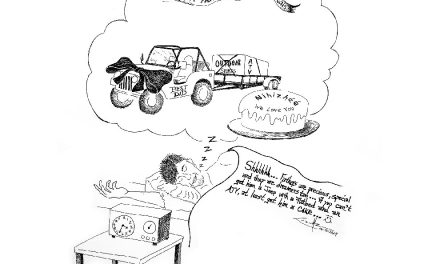

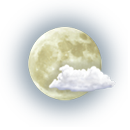
 Highway 264,
Highway 264, I-40, WB @ Winslow
I-40, WB @ Winslow